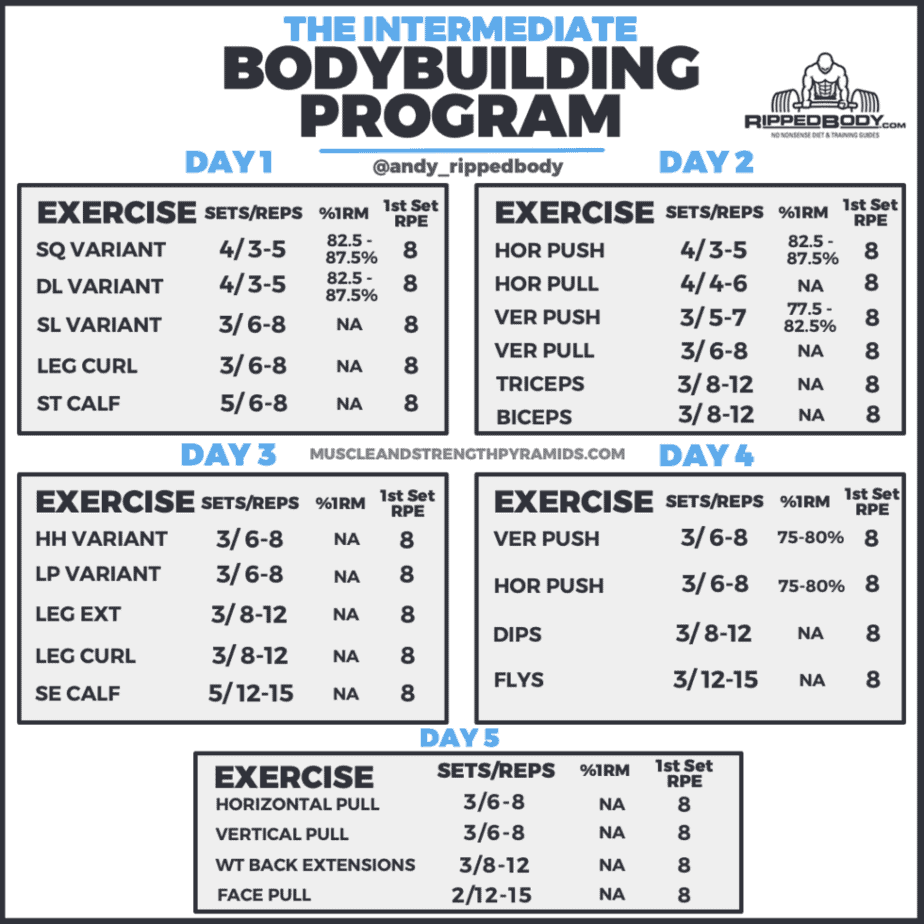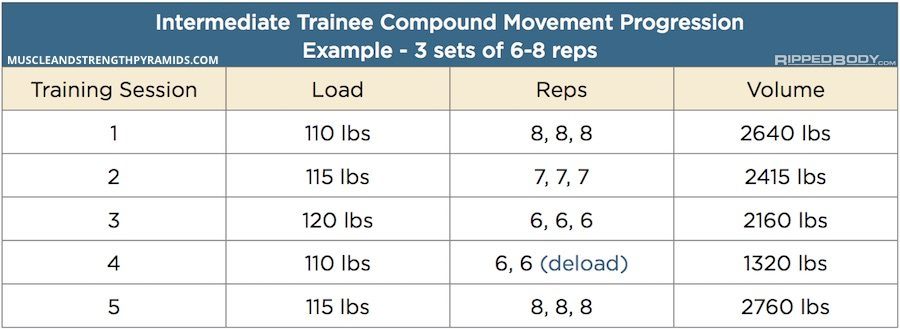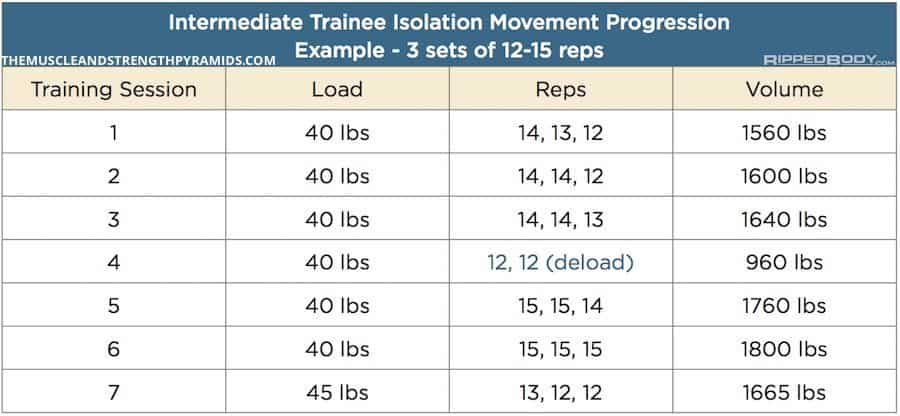This is a 5 day intermediate bodybuilding program developed by the smart folks at Ripped Body. It runs for 4 weeks at a time, with the 4th week acting as a deload. It increases weight each week, but reduces volume each week of the cycle. If you’re still able to progress weekly without reducing sets or reps, then the beginner bodybuilding program is a better choice and will let you progress more quickly.
Table of Contents
Recommended Reading
This program is a sample of the principles of programming explored in the excellent The Muscle and Strength Pyramid: Training by Eric Helms, Andy Morgan, and Andrea Marie Valdez.
It is a stellar contribution to the strength training literature and comes highly recommended.
5 Day Intermediate Bodybuilding Program Spreadsheet (RippedBody.com)
This intermediate bodybuilding workout routine spreadsheet is based on an interpretation of RippedBody.com’s blog post.
Visual Summary: Intermediate Bodybuilding Workout Routine

Program Progression
Major Compound Movements
Below you’ll find an example provided by RippedBody.com on how the major compound movements progress in the program.
For weeks 1 through 3, a rep is removed each week, descending from 8 to 7 to 6 reps per set. All weeks maintain 3 working sets. For week 4, no reps are removed and instead a set is removed.
After week 4 the cycle restarts at the highest rep count (in this example, 3 sets of 8 reps, but this varies depending on the movement). All of this is shown in the workout routine spreadsheet.

Accessory Movements

Progression on accessory movements (the exercises highlighted in blue on Week 1 within the spreadsheet) is based primarily on the number of reps achieved. To that end, it is important that you record the total number of reps achieved for all sets within the spreadsheet.
For example, if you do 3 sets of 15 reps (15,15,15) that should be recorded as 45 reps in that movement’s row.
Accessory movements have rep ranges (e.g. 8 to 12 reps). Weight will increase when the movement can be completed for the highest amount of reps for all sets. If that is not achieved (which is fine and normal for accessories), the weight stays the same.
If all reps are achieved, the spreadsheet will automatically add 5lbs/2.5kg to the movement for next week. For dips and chin ups, weight can be added by using a dip belt, a weighted vest, or holding a dumbbell between your feet.
I’d recommend starting with the “dumbbell between the feet” method and then progress to a dip belt. There’s a good chance your gym already has a dip belt and they’re easier to load. If you have to purchase your own, they’re cheaper than a weighted vest and, again, easier to load for these movements. Weighted vests are generally better for conditioning, but can be used for chin ups, dips, etc. as well.